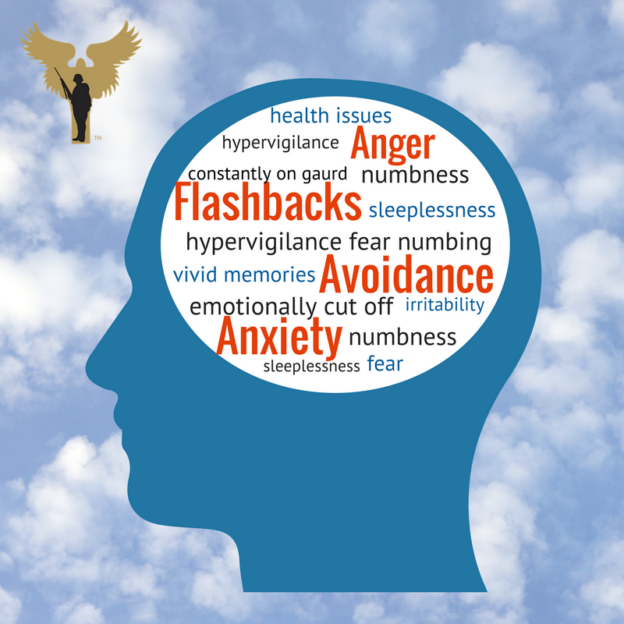Understanding the Link Between Chronic Pain, Physical Discomfort, and Emotional Distress
The association between chronic pain, physical discomfort, and emotional distress is not merely coincidental but underpinned by complex biological and psychological mechanisms. One of the most prominent theories in this field, the Gate Control Theory, suggests that psychological factors can influence the perception and intensity of physical pain. Within this theory, elements such as negative emotions or stress can essentially ‘open a gate’ for pain signals, amplifying one’s awareness of discomfort.
On the other hand, chronic physical discomfort can also significantly impact one’s emotional well-being. Sustained physical pain can limit an individual’s day-to-day living and as a result, lead to feelings of frustration, anger, and even depression. This bi-directional relationship between physical discomfort and emotional distress creates a loop, often making it challenging for sufferers to separate their physical pain from emotional turmoil. The understanding of this reciprocity forms a crucial foundation in holistic therapies that approach pain management from both physical and emotional aspects.
The Impact of Stress and Worry on Physical Well-being
Recent studies suggest that chronic stress, characterized by prolonged periods of worry and anxiety, can have a profound impact on physical health. An increasing body of evidence points to the fact that unchecked stress can lead to a multitude of health problems, including heart disease, hypertension, diabetes, and even some forms of cancer. It does so by activating the body’s “fight or flight” response repeatedly, which over time, can cause wear and tear on the body, leading to physical discomfort and diseases.
Stress can also contribute to discomfort by affecting habits and behaviors. Anxious feelings may fuel habits like excessive alcohol consumption, poor dietary choices, smoking, and lack of physical activity which all increase the risk of numerous health issues. As such,
chronic stress plays a significant role in exacerbating physical health issues, creating a continuous cycle of emotional distress and physical discomfort.
How Mount Holly Residents Cope with Physical and Emotional Pain
In the quaint town of Mount Holly, native residents have developed a unique way of dealing with their physical and emotional pain. Their struggle is reflective of global issues – striking a balance between maintaining physical health and preserving emotional sanity amidst life’s challenges. Interestingly, these residents have shown a penchant for using community resources to alleviate suffering, turning to simple yet effective measures such as group therapy, outdoor physical activities, and seeking support from local counseling centers.
Among these practical communal solutions, group therapy stands out as a preferred method, allowing individuals to share and reflect on their experiences in a supportive environment. Concurrently, the town’s health officials tirelessly promote the relevance of physical activity like hiking or jogging in local parks. Exercise, they often emphasize, helps not only in maintaining fitness but also as a recognized natural method for boosting mental health. Comparatively, counseling centers in Mount Holly adopt a more traditional approach, offering one-on-one psychotherapy sessions for those needing professional help in navigating through their physical and emotional woes.
Pain Perception: The Role of Mental Health in Chronic Pain
The intricate relationship between pain perception and mental health is increasingly recognized across diverse areas of psychological and medical research. Within this nexus, mental health plays a significant role, given that chronic physical discomfort is often linked with an increased prevalence of mental health disorders like anxiety, depression, and stress disorders. For example, these disorders oftentimes exacerbate the perception of physical pain, creating a vicious cycle of mental and physical suffering. Furthermore, those suffering from chronic pain may also have increased vulnerability to mental health issues due to the persistent distress and functional impairment induced by such pain.
Moreover, thought processes and emotional states significantly influence the perception and experience of pain. A person’s mental state can alter the interpretation of pain signals, thereby modulating pain intensity. Cognitive behaviors such as catastrophizing, focusing excessively on pain sensations, or anticipating a negative outcome can amplify perceived pain. Concurrently, positive emotional states or distractions can diminish the perceived intensity, demonstrating the inherent bidirectional relationship between pain perception and emotional states. These findings underline the importance of mental health in understanding, managing, and treating chronic physical pain conditions.
The Cycle of Discomfort and Fear: A Closer Look
Physical discomfort and emotional distress form a vicious cycle that can significantly impact an individual’s quality of life. This cycle commences with physical discomfort, which could be chronic pain, acute injury, or even the mere discomfort resulting from a demanding physical activity. The discomfort acts as an impetus for emotional responses, typically igniting feelings of fear, anxiety, or worry. These feelings spring from concerns about one’s health, the dread of potential deterioration, or the foreseeable impact it might have on one’s daily life.
Simultaneously, rising levels of fear and worry have been proven to exacerbate physical discomfort. This stems from the body’s biological response to stress, known as the “fight-or-flight” reaction. In this response, the body releases cortisol and adrenaline to prepare the body to handle perceived threats. While this phenomenon might be helpful in a genuinely intimidating situation, when activated by fear or worry related to physical discomfort, it can lead to unwanted symptoms. Such symptoms include increased heart rate, tension, and pain sensitivity. As the fear grows, so does the physical discomfort, creating a cycle that leaves many trapped and unable to break free.
Coping Strategies for Physical and Emotional Distress in Mount Holly
Mount Holly residents employ a variety of coping mechanisms to handle both physical and emotional distress. The abundant local parks and beautiful landscapes in the area have been a component of therapy for many. They offer a tranquil environment for relaxation exercises such as yoga, tai chi, and mindful meditation that help reduce physical pain. Additionally, physical activities including walking, cycling, and light workouts at these sites allow residents to improve muscular strength, flexibility, and endurance which can minimize physical discomfort.
Emotional stress, on the other hand, is managed through various psychological approaches. Cognitive behavioral therapy (CBT), a widely used technique in managing emotional distress, has proven effective for many residents. Licensed psychologists offer one-on-one sessions, providing a safe space for individuals to express their feelings and fears, and helping them develop skill sets to better manage distress. Peer group support networks, both online and in community centers, are also popular in Mount Holly. Sharing and hearing experiences in these groups not only alleviates feelings of loneliness and anxiety but also offers practical advice and inspiration for many faced with similar challenges.
Professional Insights: Experts on the Pain-Anxiety Connection
The connection between physical pain and emotional distress, particularly anxiety, is gaining significant recognition in health and academic circles alike. Experts in the field are dedicating their time and effort to delve deeper into the intricate dynamics bridging these two aspects. Pain is no longer just perceived as a purely physical sensation; instead, it is comprehended as an experience greatly influenced by cognitive and emotional factors that shape individuals’ perception, interpretation, and overall experience of pain.
Experts highlight the neurobiological links that underlie the pain-anxiety association. Studies have indicated the overlapping neural pathways utilized by both physical pain and emotional distress signals in the human body, explaining the corresponding rise of one in the presence of the other. Furthermore, long-term experience of physical pain has been shown to lead to changes in the brain’s structure and function, often correlated with increased levels of anxiety and depression. Thus, understanding this intricate connection is key to developing more comprehensive and effective pain management strategies.
Local Resources for Chronic Pain and Stress Management
When seeking relief from both physical discomfort and emotional distress, numerous local resources are available to the denizens of Mount Holly. For instances of acute or chronic physical pain, the city boasts a variety of options, including physiotherapy centers, pain management clinics, and holistic treatment facilities. These establishments offer services ranging from medication management and physical therapy to alternative treatments like acupuncture or massage therapy, all aimed at alleviating physical discomfort.
Simultaneously, when dealing with emotional distress and anxiety, the available mental health resources should not be overlooked. This comprehensive support system includes psychiatric clinics, licensed therapists, support groups, and mindfulness workshops. Moreover, many of these providers offer services that are specifically tailored to individuals suffering from stress or anxiety related to chronic pain. This multi-pronged approach ensures that the mind-body connection is duly acknowledged and addressed, bringing both relief and resilience to those grappling with the dual challenges of physical pain and emotional distress.
The Role of Community Support in Alleviating Pain and Fear
Community support plays a crucial part in reducing physical discomfort and emotional distress, providing an indispensable resource for individuals grappling with these issues. Local groups and organizations often offer help in various forms, be it through formal interventions or simple human connections. These resources are typically designed to nurture a sense of belonging, boost individuals’ emotional stability, and provide a valuable social safety net.
In addition, community support can promote healthier lifestyles and attitudes toward pain and fear. Regular wellness programs, group workouts, and mindfulness initiatives can instill better habits and facilitate physical well-being. Simultaneously, community outreach programs and support groups can foster empathetic dialogues, helping individuals articulate their feelings and cultivate healthier emotional responses to pain. These collective efforts contribute significantly to the overall well-being of Mount Holly’s residents, creating a more resilient community.
Future Directions: Research and Treatment Approaches in Mount Holly
Recent developments in Mount Holly indicate a surge in both the research and understanding of the interplay between physical discomfort and emotional distress. The focus has expanded beyond just treatment of the physical symptoms, to an integrated approach that also addresses emotional well-being. This emerging field of study has led to the evolution of innovative treatment strategies, involving a combination of physical therapy, psychological counseling, stress management techniques, and community support groups.
One such promising approach is the adoption of an interdisciplinary pain management program. This program is patient-specific and involves a team of highly skilled therapists, physicians, health counselors, and social workers. In addition, there is an increasing trend towards the use of digital mental health resources, such as mobile applications and online therapy sessions, which are aimed at providing immediate and accessible care for the residents of Mount Holly.
• The interdisciplinary pain management program is a holistic approach designed to address not just the physical, but also the psychological aspects of pain. This novel strategy involves:
◦ A team of multi-disciplinary professionals including physicians, therapists, health counselors and social workers who work in tandem to provide comprehensive care.
◦ Individualized treatment plans that take into account each patient’s unique needs and circumstances.
◦ An emphasis on empowering patients through education about their condition and involvement in decision-making regarding their treatment.
• Digital mental health resources are becoming increasingly popular as a means of providing immediate and accessible care. These include:
◦ Mobile applications that offer therapeutic exercises, mindfulness techniques, stress management tools, and more at users’ fingertips.
◦ Online therapy sessions, which allow residents to receive professional counseling from the comfort of their own homes.
◦ Virtual support groups where individuals can connect with others experiencing similar struggles for mutual encouragement and shared coping strategies.
Future directions for research in Mount Holly involve further exploration into the connection between physical discomfort and emotional distress. There is potential for groundbreaking discoveries that could revolutionize current understanding of this complex interplay.
Treatment approaches will continue to evolve towards more integrated strategies combining both medical interventions with psychosocial supports such as cognitive-behavioral therapy (CBT), mindfulness-based stress reduction (MBSR) techniques, individual counseling sessions etc., aimed at promoting overall wellness rather than merely treating symptoms.
In conclusion,
• It is clear that Mount Holly is making significant strides forward in terms of its approach to managing physical discomfort coupled with emotional distress.
• By incorporating innovative research findings into practice quickly & effectively; it sets an example for other communities around the world on how best to tackle these issues holistically.




